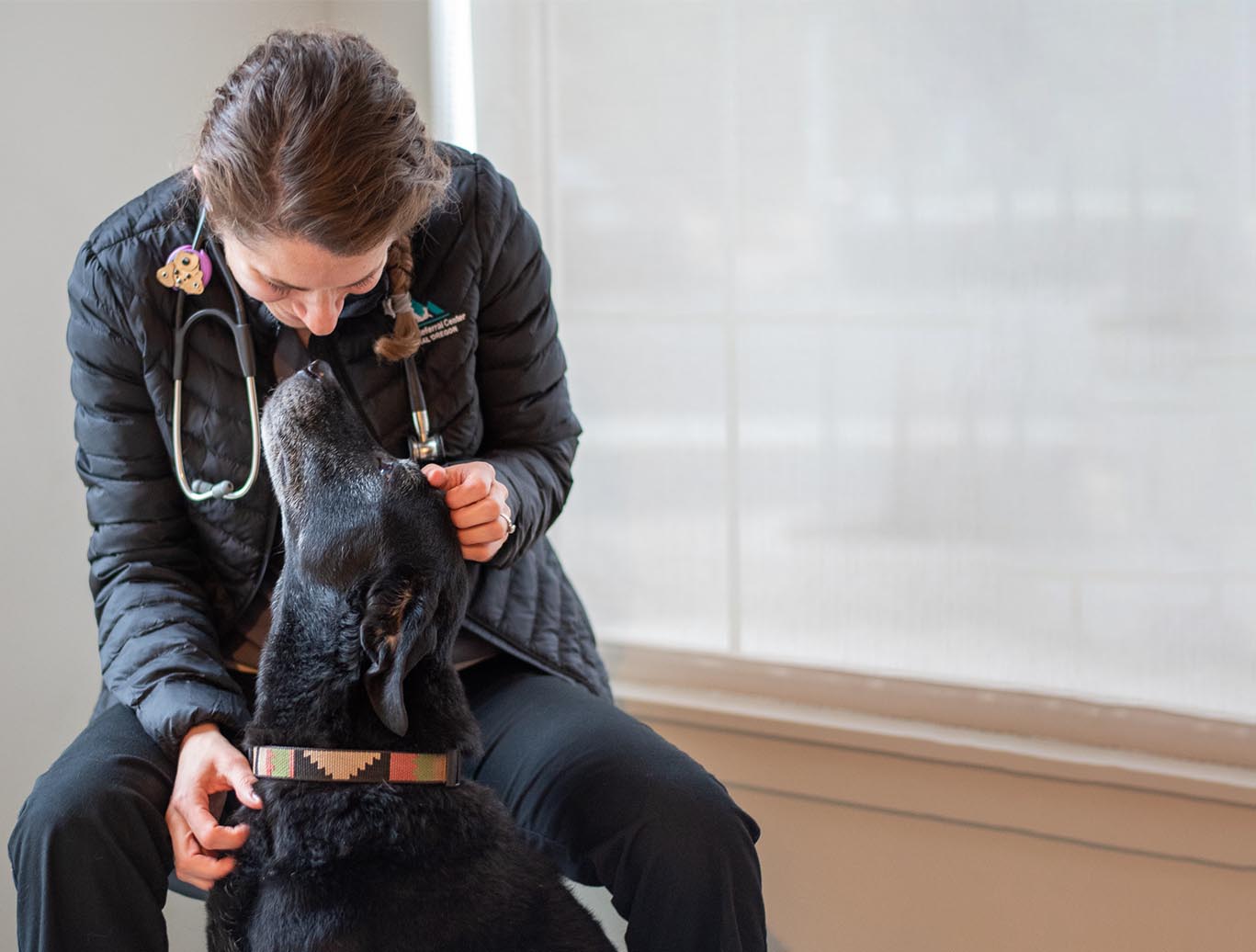What is Chemotherapy in Pets Really Like? Fact & Fiction
What Is Chemotherapy in Pets Really Like? Facts & Fiction
What does chemotherapy in pets really look like? Is it the same as for humans? In the event your dog or cat develops cancer, it’s helpful to know the differences between pet chemotherapy and treatment for humans. Dr Kristen Couto, veterinary oncologist at VRC, joined veterinary dermatologist Dr. Jennifer Bentley for a discussion about chemotherapy in pets on a recent Facebook Live video. Here are some of the facts.
Chemotherapy Drugs Are Similar for Pets & People
The FDA has approved some new chemotherapy drugs for veterinary use. However, most drugs used in chemotherapy for dogs and cats are the exact same drugs used for treatment of humans. They are, in fact, the same chemotherapy drugs that have been in use for generations. So, if the drugs are the same, how does chemotherapy for pets differ? Or does it? According to Dr. Couto, one of the primary differences is the goal for the patient.
Human life span can extend over 80 years. A healthy dog may live a happy life of 10-15 years, while a cat may enjoy a life span of up to 20 years. Dr. Couto affirmed that for her canine and feline patients, the first priority is always quality of life. The goal is to support pets to feel as healthy as possible for as long as possible, while avoiding pain and suffering. The aim is to make life better, not necessarily to provide a cure. If chemotherapy can minimize symptoms and maximize comfort, then it might be a recommended treatment.
Dosage for Pet Chemotherapy Is Lower
The drugs may be similar, but the dosing strategy in veterinary medicine is much lower for pets—about half, in fact. Again, the process for pets prioritizes quality of life. A lower dosage spares pets undesirable side effects such as vomiting, diarrhea, and loss of appetite. Higher dosages in humans are intended to aggressively attack and kill cancer. For pets, a higher dose can has a higher likelihood of causing side effects and leading to a poor quality of life.
Up to 15-20% of pets who undergo chemotherapy may experience uncomfortable side effects in the first phase of treatment. When that occurs, Dr. Couto says she adjusts the dose and may administer other medications to make the treatment as tolerable as possible. In some cases, she may recommend stopping the treatment altogether. Happily, 80% of dogs and cats breeze right through treatment, and even look forward to the extra treats and attention that come with a visit.
How It Works
Chemotherapy can be administered at home, orally. Alternatively, pet patients can receive intravenous treatment at the hospital. Depending on the disease, a veterinary oncologist may recommend one delivery over the other.
If a pet parent opts for oral chemotherapy, they must take care to avoid exposure to the drugs. It’s important to wear gloves and to avoid breaking or cracking capsules or tablets. At VRC, pet patients get the VIP treatment when they come to the hospital for their chemotherapy. Treatments can take up to 30 minutes. Staff takes care to learn how dogs and cats like to be held, speak to patients during treatment, and provide a little something delicious into the bargain.
For people undergoing chemotherapy, a port may be attached in the breastbone area to facilitate needle access over the course of many treatments. Typically, says Dr. Couto, ports are not used in veterinary medicine. Pets are more likely to interfere or fuss with them, leaving the area prone to infection. Luckily, most dog and cats tolerate the periodic poke of the needle just fine.
Treatment Parties!
At VRC, arriving at the end of a course of pet chemotherapy treatment is reason to party! On the last day of chemotherapy, pets get to don a festive party sign that celebrates the event. Pet parents receive a picture of their beloved bestie dressed in their finery. Dr. Couto says they make some of the happiest, cutest pictures they’ve seen.
Talk to your vet or get in touch to learn more about pet chemotherapy and other oncological therapies for cats and dogs.



